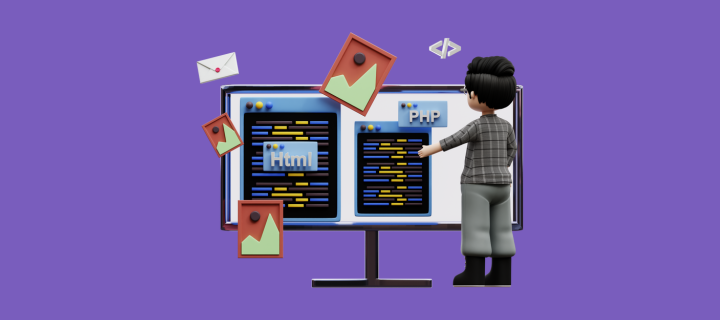
Demystifying Code Review Metrics for Improved Performance
Dive into the art of code reviewing, strategies for success, and overcoming challenges. Cultivate a positive culture to foster growth and collaboration in your development team.

Demystifying Code Review Metrics: Beyond the Numbers
Code reviews are essential in software development, ensuring code quality, catching bugs early, and fostering knowledge sharing among team members. However, they can become overwhelming, especially with growing codebases and tight deadlines.
This article explores code review metrics, their role in the process, and practical strategies for making code reviews effective beyond just tracking numbers.
Introduction
Code reviews do more than catch errors—they provide an opportunity for collaboration, learning, and long-term code maintainability. But focusing solely on metrics without considering their real impact can make the process feel mechanical rather than valuable.
Let’s dive deeper into what makes code reviews effective beyond just the numbers.
Understanding code review metrics
Code review metrics help track progress and identify areas for improvement. While they provide useful insights, they should be treated as indicators, not absolute measures of success.
Common code review metrics
- Lines of code (LOC) reviewed – Measures the volume of code reviewed but doesn’t indicate code quality.
- Review comments – Highlights engagement but doesn’t guarantee meaningful feedback.
- Reviewer participation – Identifies workload distribution but may not reflect the depth of reviews.
While these metrics provide useful data, a deeper understanding of the review process is necessary to drive real improvements. Learn more about balancing manual and automated reviews.
“Code review metrics are like signposts—they can guide you, but they don’t tell the whole story.”
The art of code reviewing
Effective code reviews require more than just metrics—they involve mindset, communication, and a thoughtful approach.
Setting the right mindset
Approach code reviews with a learning mindset. Instead of treating them as a checklist, view them as an opportunity to explore different coding styles, share knowledge, and refine best practices. Encourage constructive feedback that supports growth.
Communicating effectively in reviews
Feedback should be clear, specific, and constructive. Instead of vague comments like “this could be better,” explain why and offer alternatives. This creates a more productive feedback loop and builds trust within the team. See how PullFlow improves code collaboration.
Balancing thoroughness and speed
Reviews should be detailed but not overly pedantic. Prioritize issues based on impact—critical logic flaws should be flagged, but minor stylistic changes can be automated or documented in guidelines.
Strategies for successful code reviews
Establishing clear guidelines
A well-defined code review process ensures consistency. Set expectations for:
- Review scope (logic, security, readability)
- Commenting best practices
- Response time expectations
A checklist can serve as a useful reference for both reviewers and developers. See PullFlow’s approach to AI-assisted reviews.
Conducting collaborative code reviews
Pair programming or group reviews provide immediate feedback and help spread knowledge across teams. This reduces silos and improves the overall development workflow.
Using code review tools effectively
Leverage tools that support inline commenting, automated tests, and AI-assisted analysis. Integrating these tools into the workflow streamlines the process and ensures consistency. Learn how AI enhances institutional knowledge in code collaboration.
Overcoming challenges in code reviewing
Addressing biases
Code reviews should focus on improving code, not personal critique. Foster an ego-free review culture where feedback is welcomed and seen as an opportunity for growth.
Handling disagreements professionally
Disagreements can arise over coding styles or design choices. Encourage open discussions, back opinions with reasoning, and escalate only when necessary.
Best practices for effective code reviews
Prioritizing readability and maintainability
Good code isn’t just functional—it should be easy to read and modify. Encourage:
- Consistent naming conventions
- Modular design
- Sufficient inline documentation
Ensuring security and performance
Look out for potential security risks and inefficient code. Addressing these early prevents larger issues later. Understand how structured code reviews catch hidden bugs.
Building a strong code review culture
Encouraging a positive review environment
A strong code review culture values learning over criticism. Promote:
- Respectful and constructive feedback
- Recognition for well-written code
- Open discussions on best practices
Mentoring junior developers
Code reviews are a great way to mentor junior team members. Provide context in your feedback and explain the rationale behind suggested changes.
Common pitfalls to avoid
Over-focusing on minor issues
Don’t get stuck on trivial stylistic details—automate them through linting tools. Instead, prioritize logic, maintainability, and security.
Ignoring high-level design flaws
Reviews should consider architectural decisions, not just individual lines of code. Watch for code duplication, unclear dependencies, and scalability concerns.
Relying solely on automation
While automated tools are valuable, human judgment is irreplaceable. Use automation to supplement, not replace, manual reviews. Read about the balance between automated and manual reviews.
Conclusion
Code reviews are about more than just checking boxes—they’re a key part of building high-quality software and strong development teams. By focusing on meaningful feedback, leveraging the right tools, and fostering a collaborative culture, teams can make code reviews both efficient and valuable.
Embrace code reviews as a learning opportunity, communicate effectively, and refine your process to make each review count. Explore how PullFlow simplifies code collaboration.


